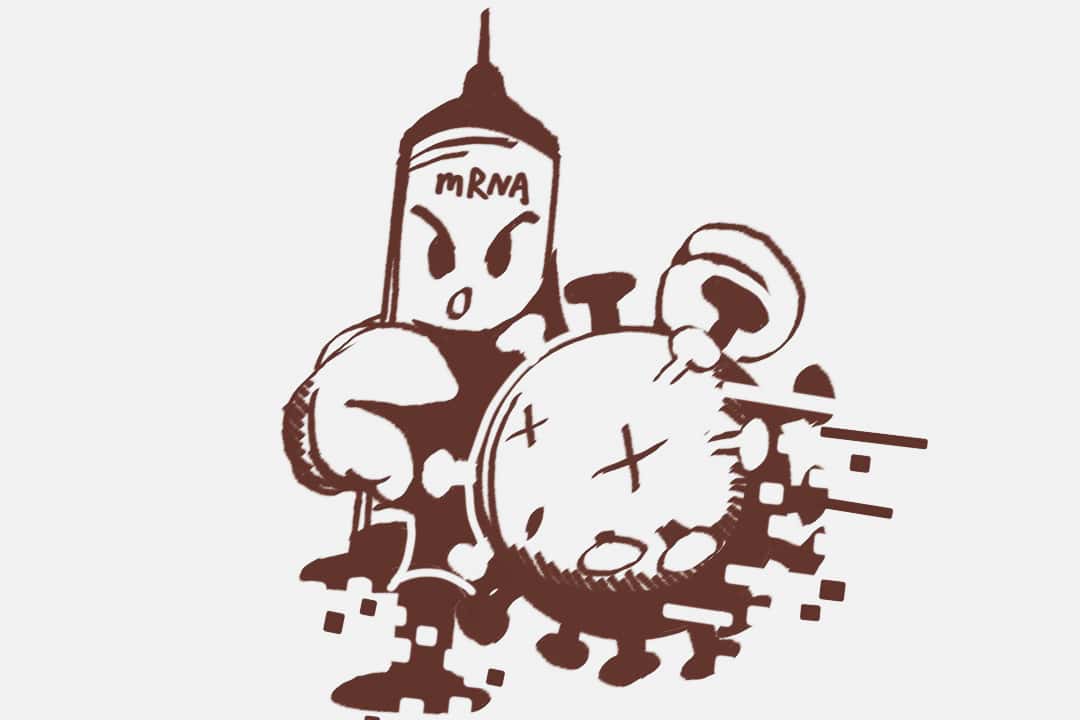High school biology gave us an idea of what a vaccine is, what goes into these disease-fighting compounds, and who discovered the first vaccine. Hint: he’s a Jenner but not related to the Kardashians. We learned that a ‘traditional’ vaccine worked by introducing a weakened pathogen, or virus, into the blood. This would allow our immunity-building white blood cells and disease-fighting macrophages to gain memory of this pathogen and thereby protect against future attacks without harming us.
In 2020, this idea of a vaccine was reformed by a new discovery; in 2021, the reformed idea saved millions of lives; in 2023, that same path-breaking idea won a Nobel Prize.
Katalin Karikó and Drew Weissman, the winners of the 2023 Nobel Prize for Medicine or Physiology, made important discoveries that led to the development of effective messenger ribonucleic acid (mRNA) vaccines against COVID-19. mRNA vaccines work by delivering instructions to our body’s cells on how to make a protein that will trigger an immune response to a specific virus. This way, the body is not exposed to the virus directly, but instead, it recognizes the virus based on a modified mRNA sequence and builds immunity for the future.
Ribonucleic acid, or RNA, is made up of four types of nucleoside molecules: adenosine, cytosine, uridine, and guanosine. It is similar to DNA but single-stranded instead of double-stranded. A strand of RNA holds instructions to make specific proteins in the body, depending on the order of its nucleosides. ‘Messenger’ strands of RNA are translated into proteins.
One of the leading concerns for Karikó’s and Weissman’s research was understanding how modifications to mRNA sequences can be made without harm to the host cell DNA from which the mRNA sequences are transcribed. mRNAs are very unstable, and foreign mRNAs are often degraded in the body as a fight response.
Karikó and Weissman discovered that changing one of the nucleosides in an mRNA strand not only makes it more stable but also prevents it from being immediately destroyed by inflammation when it’s injected into the immune system. Specifically, if uridine nucleosides mutate to pseudouridine, the engineered mRNA becomes more stable to work with.
The next hurdle was to figure out how to safely transport the modified mRNA into the host cell, and a technique using lipid-based nanoparticles — particles so small they’re most conveniently measured in nanometres — came to the rescue. Lipid-based nanoparticles, when combined with the mutated mRNA, can fuse with the cell membrane, allowing for undegraded transport into the host cell.
Karikó and Weissman’s ideas of using nucleoside base modification and lipid-based nanoparticles solved a major dilemma and offered a creative way for introducing mRNA vaccines into the bloodstream. The COVID-19 mRNA-based vaccine was over 90 per cent effective, saving the lives of millions globally, and gave rise to a major breakthrough — not only in the world of immunology and science but also in a world that was previously quarantined for two years because of the SARS-CoV virus.
The discovery of mRNA-based vaccines is a huge milestone, and a well-deserving candidate for recognition by the Nobel Prize, as it has the potential to revolutionize the treatment of various viral diseases, such as HIV-AIDS and fatal strains of malaria.



No comments to display.